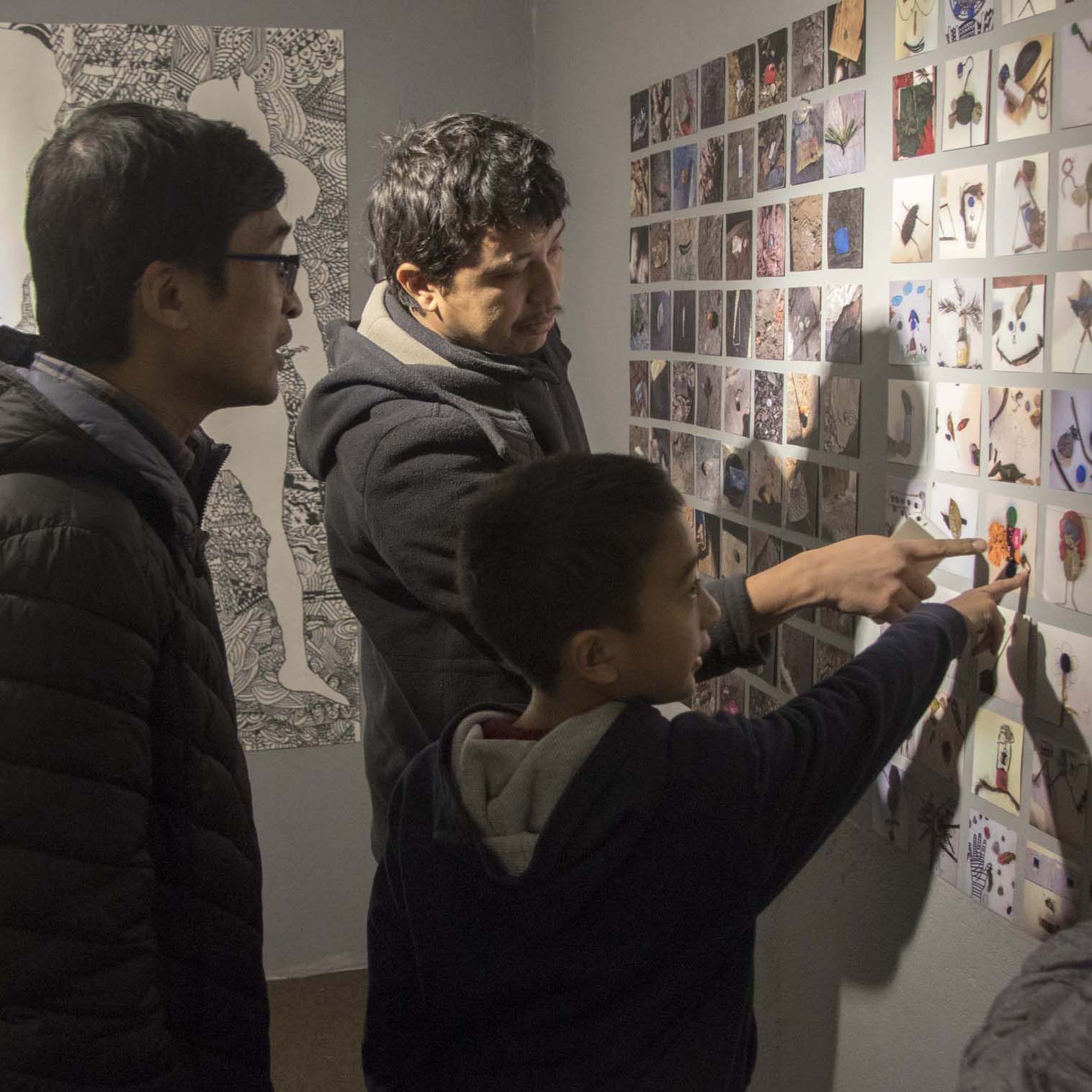When a layperson walks into a gallery and sees a hefty price tag attached to an artwork, one is almost always taken aback. What sets the price of an artwork is always unclear to most visitors. And some questions that are likely to swirl their minds are: how valuable is the work? Is the artist famous? Is all art expensive or is the price just a way to get people’s attention?
“The price will always seem mysterious to people,” says Roshan Mishra, director of the Taragaon Museum. “But it is usually marked by the artists themselves,” he says.
The art scene in Nepal has gradually matured over the years. The contemporary art scene is thriving with the passion of artists and creatives who are driven to inspire and influence people with art. And with the progression of the art scene, prices of artworks have changed—they have soared to extravagant figures. There are works of artists whose values go beyond a hundred thousand, even a million. To the general mass, these numbers are baffling. But what really determines the value of art?
“The first factor is aesthetic appeal, then the artist’s experience and reputation, or let’s say branding, then its resell prospects,” says Madan Chitrakar, a senior artist. “Some observation factors such as its originality or novelty also play a part in the price making,” says Chitrakar.
Then there’s also how the artwork impacts history; how over time it becomes a story and contributes an understanding of the society. “Art is also a testament of history, and so, it’s that nature that also makes them more valuable,” says Sangeeta Thapa, founder-director of the Siddhartha Art Gallery.
“Sometimes it’s also determined by the size of work, the time the artist has immersed in the work or the resources they have used,” says Mishra.
“But art generally is expensive because of its uniqueness, creativity and its ability to reflect our world. It’s expensive because it’s also a testimonial to our history and because it is art that gives nuance to our culture,” Thapa further explains.
In the global context, a piece of art’s value is also determined by the art dealers and the galleries that represent artists. It is also influenced by the life of the artwork, and other times, the artist’s exposure in exhibitions and media coverage. “How much has been written and analysed about an artist’s work greatly influences their value in the market. Even the simplest work of Picasso will cost over a million over time; his work has now become monumental,” says Chitrakar.
Art is also driven by what recognised and popular influential artists or curators are saying about art. According to the Vox article titled ‘Why Art is Expensive’, the art market is based on what influential art creatives are discussing about art. It is their impression that will shape the idea of desirable artists and art and which ultimately will affect the pricing in the art market. In this regard, what narrative or context the art community is promoting also makes a significant impact on the value of the work.
Globally, the worth of an artwork has also escalated with the trends of participating in international art fairs, where galleries and artists target their works to a global market.
The 2019 Vox article also mentions that although this gives less return to small galleries, this has also become a preferred way of art collectors and enthusiasts to collect and discuss art.
In Nepal, as elsewhere in the world, for emerging artists, their exhibitions in galleries are what helps them sail their careers in motion. Many a time, this is where they come to understand how the correct pricing helps them amplify their body of work. “Sometimes the artists don’t realise how much their work is worth and the gallery usually plays a part in helping them see how the value they attribute also gives a weight to their work,” says Thapa.
There is, however, no fixed or objective value of art, and the cost of art is mostly decided for by a collective understanding. “But in all cases, it’s significant that it’s the creators who are making the decision of the value because no one else can understand their work better than others,” she says.
Challenges of the Nepali art market and why art has become expensive
Right now, lack of integrity and systemic standard for a pricing mechanism is battering the art market and restraining an expansion of buyers, says Mishra, who recently started an online gallery and art marketplace ‘Nepalian Art’ to adapt to the new ways of doing things in a Covid reality. Many creatives also believe the sole decision of the artists in pricing could be costing the art market and its ecosystem.One of the most common concerns the curators and artists the Post spoke to was how the artists’ preferred value fails to acknowledge the market trends. “Their pricing to buyers oftentimes seems questionable,” says Mishra.
“The values placed are random; in many cases, even the works of upcoming artists are the same as of the senior artist. We have not been able to instil a strategic structure to art values, for that matter the business of it,” says Kailash K Shrestha, a visual artist and founder of Artudio, a hub for contemporary art. Prices of artworks have skyrocketed without acknowledging the artist’s years of experience or what price can be affordable for the local market.
“Instead of looking at how the market functions, many artists look at their own circumstance for pricing. A freelance artist will place a price according to what he feels he needs to get at his age but does not account how the market functions,” he says.
Moreover, the values of the work mimic the trends of the West, says Shrestha. “But there is still a long way for us to go to use those numbers in our market. There is a way of doing things and we haven’t yet worked on that process,” he says. “In Nepal, there still aren’t that many galleries working with the artists or representing their works. We individually participate in global fairs, and at an institutional level we haven’t yet been able to discuss this matter more transparently,” he says.
There have also been instances where galleries have not been able to sell an artist’s work because of the expensive price bracket. “I have gone through situations where artists have drastically changed their prices in the same year of their exhibited price in the gallery. They shouldn’t do that because the variation in price in such a short time creates a misunderstanding in the market in terms of how galleries are marking up premium prices,” says Thapa.
Today, according to Chitrakar, many artists are increasingly getting allured to the trend of making money rather than focusing on making art. “Artists are skipping stages of growth and even practicality. They are chasing popularity instead of exploring their art and perfecting their skills. And so, in the long run, art is not able to sustain them because their choices are fixated in becoming accomplished than enriching art.”
What needs to be done?
Chitrakar believes primarily it is the aesthetic appeal of the artwork that determines the value of the artwork, and that’s where the artists need to work more to give good value to their work. “Nobody will be able to deny the value if the work is admirable, inspirational and can interact with people. The aesthetic beauty serves as a bridge to connect with people,” he says.
Many artists also believe, in order to give value, there also needs to be more variance in the art scene—in terms of new imagination and new contribution to the history of art. “If we are able to push the idea of the value of art, people may understand what art can do. Art needs to be exploratory than a trail of copies or modern stereotypes,” he says.
These days, there are more art collectors and buyers than there ever were in the past, yet an undermining fact remains that most of these buyers are the same people who bought art before or the affluent who have now come to understand how art is an investment. “But the general public is yet to understand how art is an investment, and that is also why they cannot understand the prices,” says Chitrakar.
“Although our pricing is still less when compared to the global market, most still look expensive because the general people still feel conflicted with the idea of art,” says Sagar, a gallery owner, who the Post is identifying with just his first name to protect his privacy.
“The most frequent questions people ask me is why art is expensive and why a certain artist’s work is more expensive than that of his seniors—what makes the pricing special,” he says. While Sagar has been able to sell off veteran artists in just days time, sometimes it’s impossible to sell the work of emerging artists because of their exuberant prices, he says.
But the onus of explaining the value of artwork also lies on the curators, galleries and artists, says Roshan Mishra. “The values of artwork will seem incomprehensible to people, but it is the responsibility of the artists and the creatives to justify the price tag—we need to educate and communicate why art is priced the way it is while also making sure that the given value is rational,” says Mishra.
The Nepali art market heavily relies on international buyers than local purchasers and in recent years the interest of hoteliers, business people and young art enthusiasts has also helped boost the market. However, the pandemic has abruptly disrupted the momentum.
“Sustaining art businesses and galleries in the time of Covid has become extremely challenging,” says Mishra.
Since the start of the pandemic, Sagar has not been able to make a fruitful transaction nor has Mishra with his new venture. Many galleries have remained shut for over eight months and with it, the art scene in physicality has been cloaked. While for many artists and creatives, this has been a time reflection to see where they are, this break has also made evident that the art market needs to brace the local market, says Mishra.
“We need to look for ways to grasp the local market and should have prices more affordable for our local buyers,” says Mishra.
Srizu Bajracharya
Srizu Bajracharya is culture and arts reporter for The Kathmandu Post.






